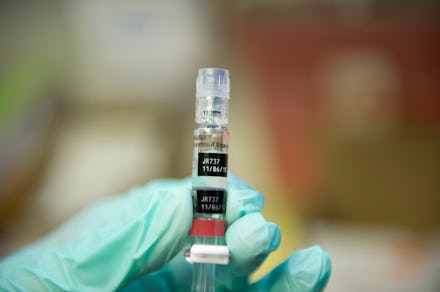The Case for Vaccinations in Three Stunning Charts

The news: This is what it looks like when a public health agency does a mic drop.
On Monday, Vox unearthed some charts that the Centers for Disease Control and Prevention put together back in 2011 to illustrate the efficacy of vaccines. As they say, the numbers speak for themselves:
In a matter of decades, some of the diseases on this list went from life-threatening to entirely preventable through concentrated public inoculation efforts. "Add all these up, subtract the cases that still exist, and you come out to just shy of 1 million cases of disease prevented annually," Vox's Sarah Kliff wrote.
And lastly, this is what it looks like when you don't vaccinate:
Why is this happening? According to the CDC, measles outbreaks have been growing due to unvaccinated people traveling outside the country and bringing the virus back home. The anti-vaccination movement has also been linked to this measles resurgence because communities with low rates of immunization are more at risk of a contagious outbreak.
And it's not just measles. There has also been a worrying series of whooping cough (pertussis) outbreaks throughout the U.S., especially in California. Measles is covered by the MMR vaccine (along with mumps and rubella), while whooping cough is covered by the DTP vaccine (along with diphtheria and tetanus).
Why is vaccination so important? It's important to keep in mind that no vaccine is 100% effective. In the case of the measles vaccine, the two-dose regimen creates immunity in 95% of people. Still, vaccination is a crucial component of maintaining "herd immunity," which is the idea that if the majority of a population is inoculated, it can stop chains of infection. Even if your body doesn't have 100% immunity against a disease, you are less likely to contract it if others around you are immunized.
As the CDC charts show, there is a reason why we've seen a decline in large outbreaks of these diseases. While medical advances, better sanitation and improved health infrastructure certainly played big parts in keeping outbreaks down, the efficacy of vaccines speaks for itself.